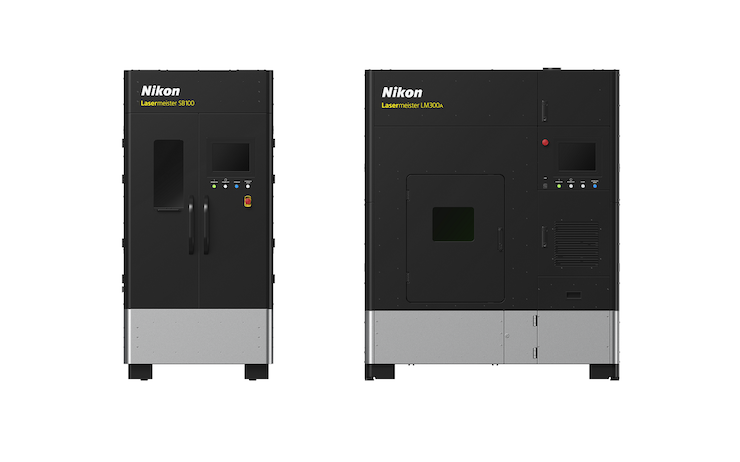



 CN/EN
CN/EN




 CN/EN
CN/EN
Nikon has announced the release of the Lasermeister LM300A next-generation Directed Energy Deposition 3D printing system alongside the Lasermeister SB100 3D scanner.

While the Lasermeister 100A metal additive manufacturing series was launched to target research, the Lasermeister LM300A has been engineered to address industrial applications.
To that end, it has been designed with an expanded build area and has the support of the SB100 3D scanner, which allows users to scan each workpiece and generate the tool path data for the 3D printing process to begin.
With this combination of technology, Nikon believes the manufacture of applications such as turbine blades and moulds can be advanced. Currently, turbine blades are used in aircraft engines and power generator to extract energy from hot gas, but their exposure to harsh conditions can mean they degrade over time. The traditional turbine blade repair process involves cutting and scraping the worn area for each blade, before welding and grinding are performed to restore the part to its ideal shape. This process is not only rigorous and lengthy, but it also produces waste and requires highly skilled welders.
Nikon suggests that its LM300A metal additive manufacturing system and SB100 3D scanner could reduce lead times up to 65% compared to the conventional welding process and minimise post-processing requirements. The alternative process put forward by Nikon sees a workpiece, such as a worn-out blade, placed inside the SB100 before the module begins to scan and measure the workpiece, comparing it to its current actual shape with its ideal CAD model to extract the difference using a built-in high-precision scanning feature. The SB100 then automatically generates the tool path data for repair specific to each damaged or worn-out workpiece, with the tool path then transferred to the LM300A to commence the additive manufacturing process. Once the additive process is complete, the workpiece can be placed back into the SB100 where it will be scanned and inspected to confirm the repair was performed to its ideal model.
During the additive manufacturing process, the LM300A leverages advanced optical and precision control technology to perform high-precision processing. This allows the LM300A to process within the accuracy of +0mm to maximum +0.5mm difference for the Z-axis direction, while real-time laser powder control by the melt pool feedback system delivers smooth surface finishing and precise processing of parts. Nikon says this helps to achieve crack-less repair with ‘optimal quality and stability.’
The Lasermeister LM300A has a maximum processing range of 297 x 210 x 400 mm and is able to process Nickel-based alloys, Stainless Steel, High Speed Steel, and Titanium alloys. Nikon says that the LM300A machine will be suitable for applications in automotive, rail, machinery and other repair applications.
Join us at TCT Asia, connect with industry innovators as you explore the entire AM ecosystem including design, materials, hardware, software, post-processing, and quality. 10,000+ professionals will unite to hear about the latest trends, explore the latest immersive AM technologies and find solutions to their AM challenges.

TCT ASIA 2024
Tuesday 7th May 09:00 - 17:30
Wednesday 8th May 09:00 - 17:30
Thursday 9th May 09:00 - 15:00
NECC(Shanghai)7.1&8.1H